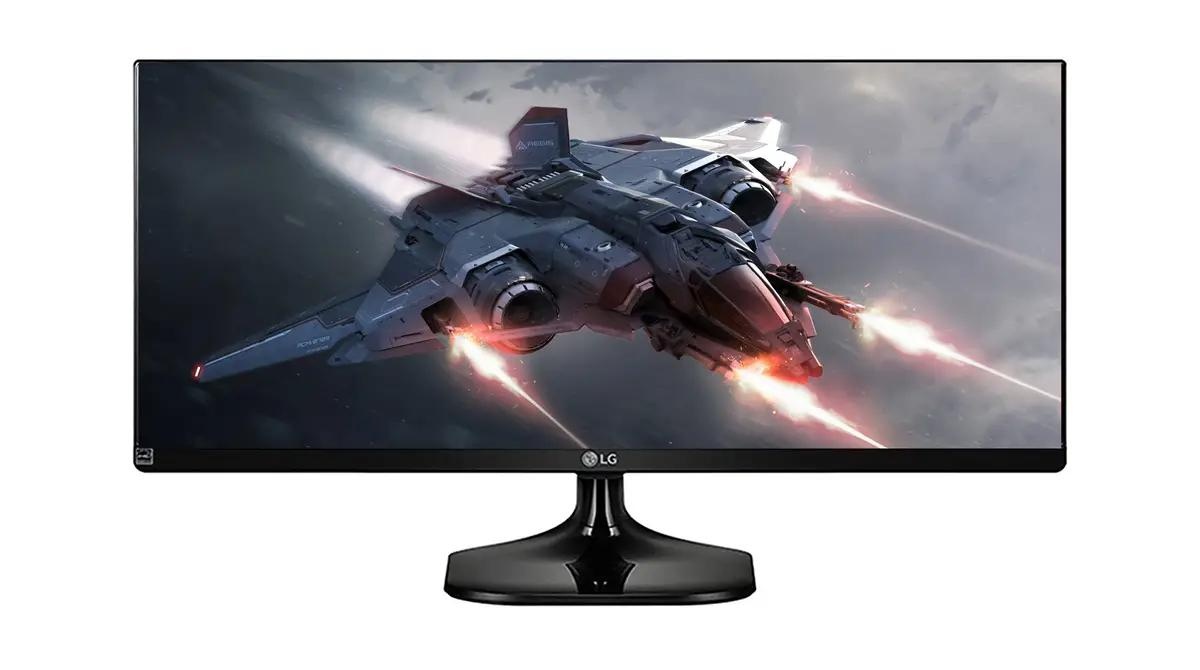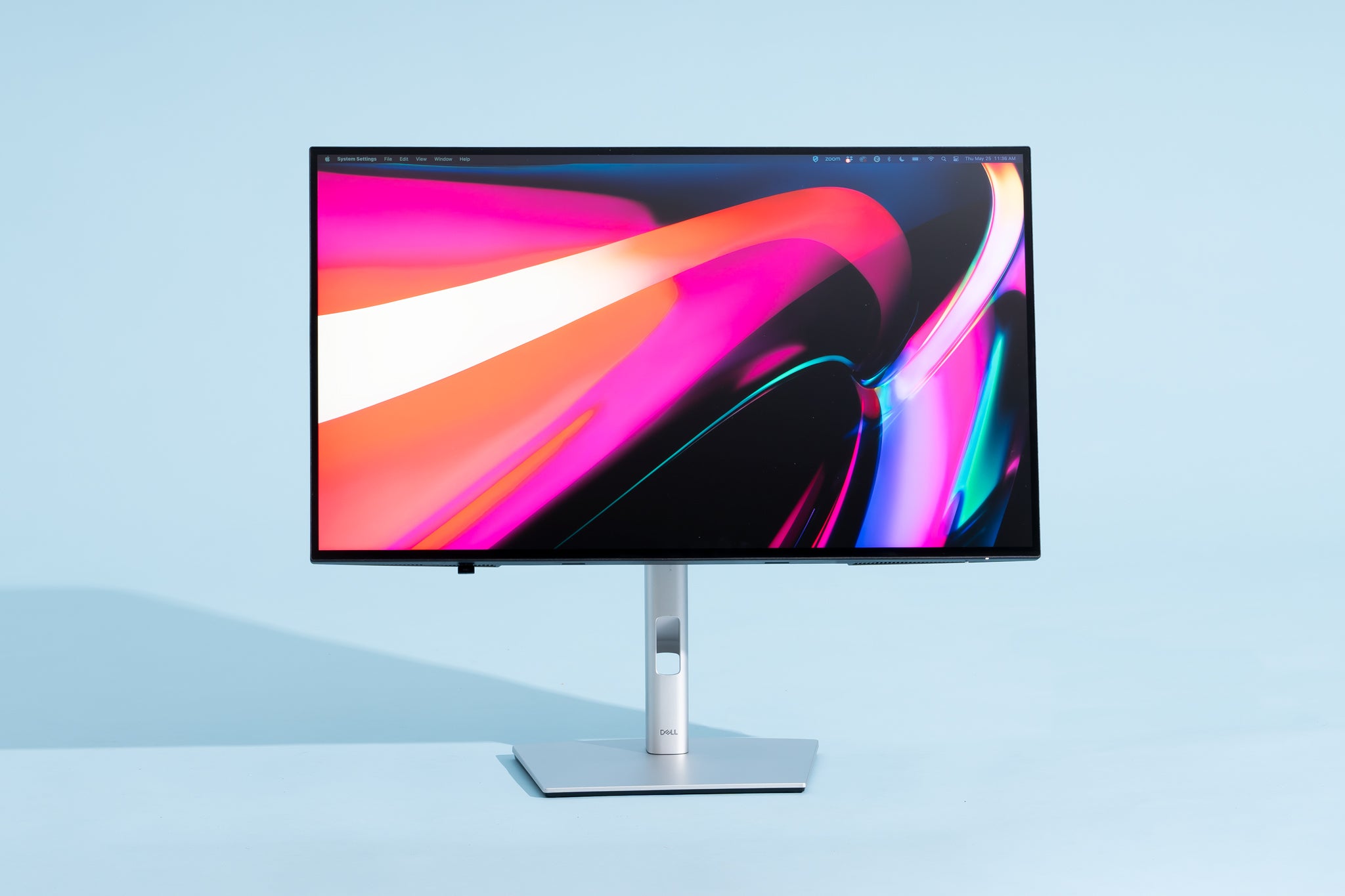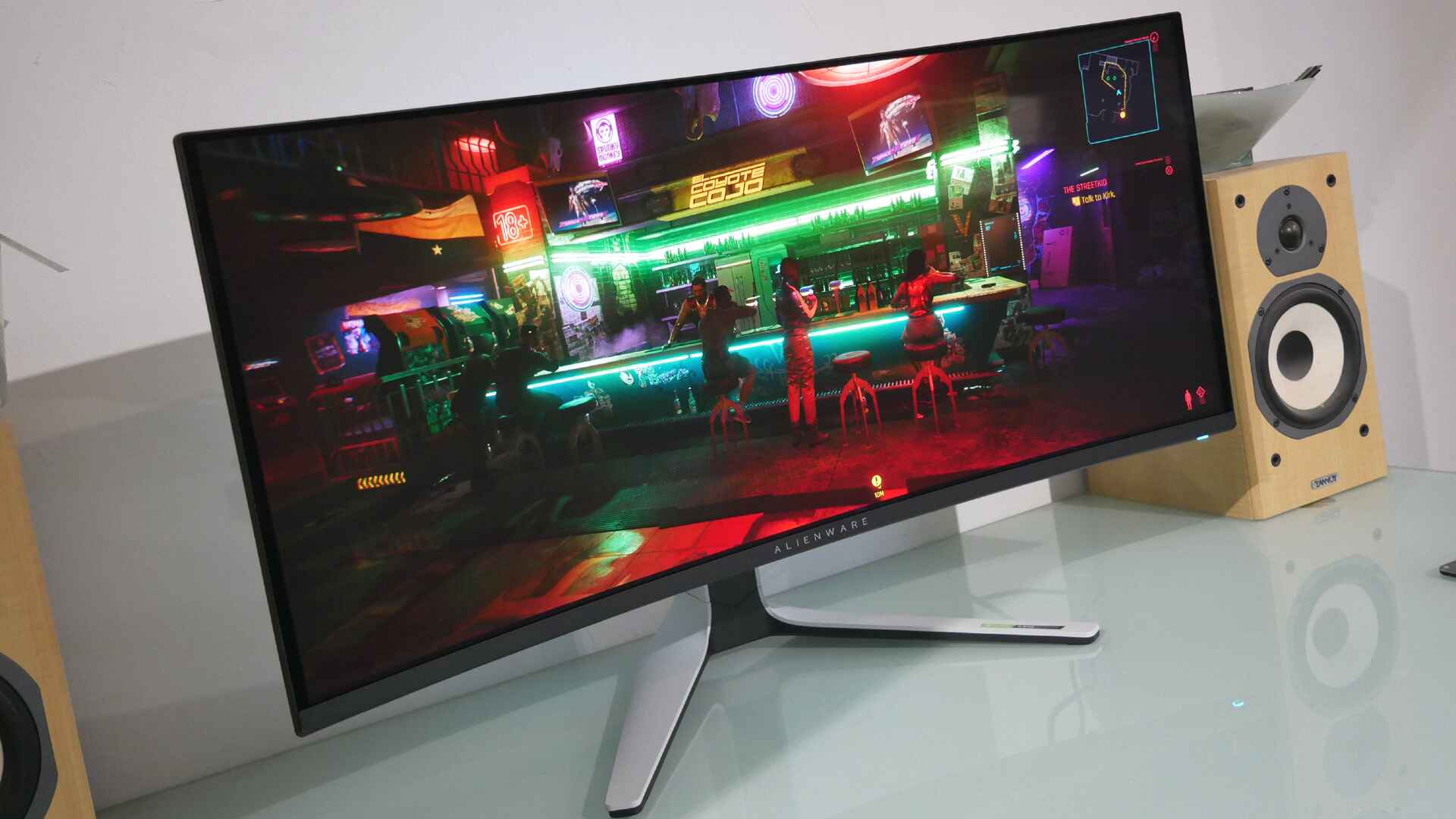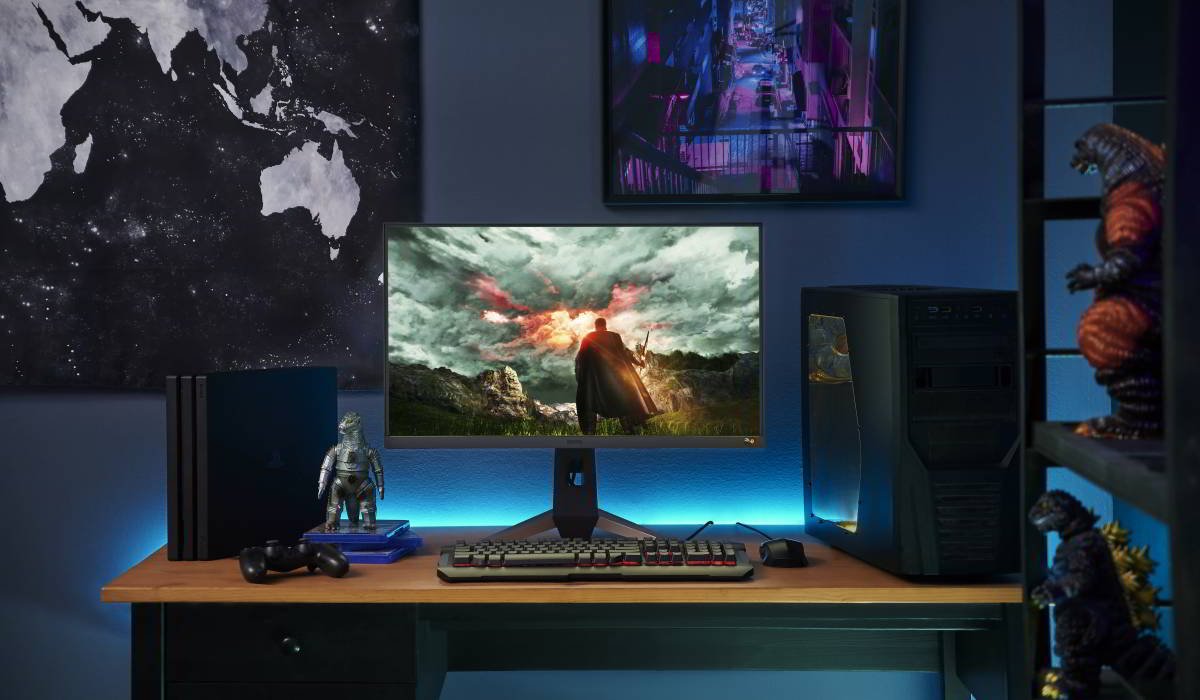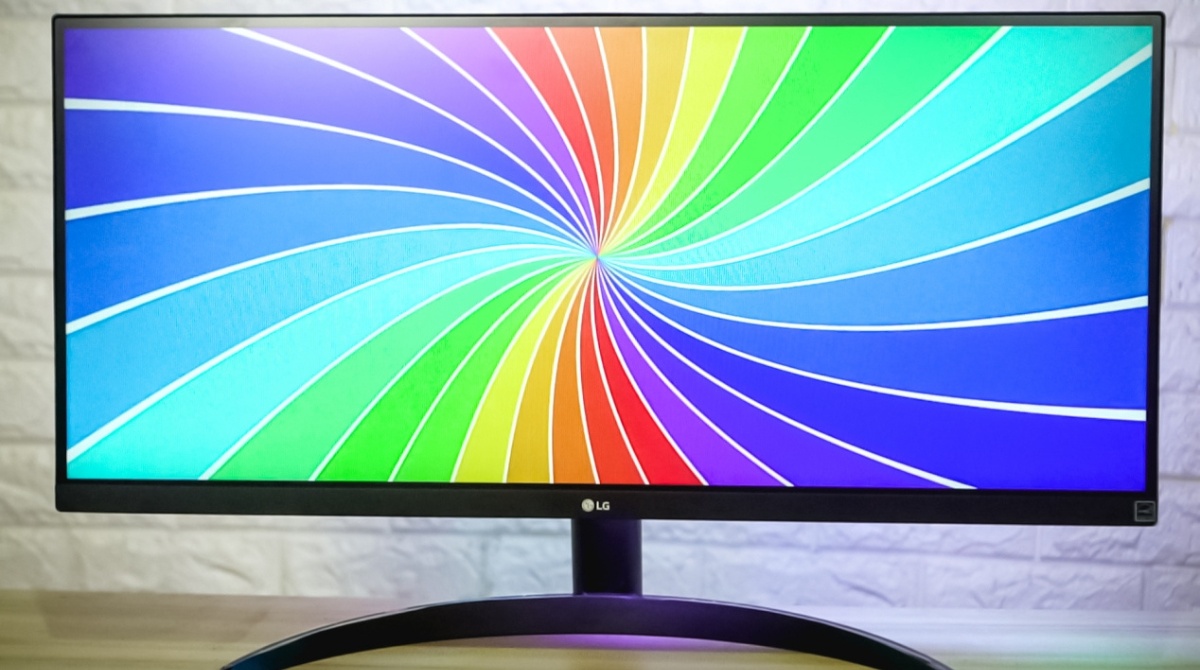Introduction
Welcome to the world of ultrawide monitors! In today’s digital age, where technology constantly evolves and enhances our productivity and entertainment experiences, having a high-quality monitor becomes essential. Ultrawide monitors have gained popularity due to their immersive display and increased screen real estate. If you’re considering purchasing an ultrawide monitor, you might be wondering about the different sizes available and specifically how big a 25-inch ultrawide monitor actually is.
Ultrawide monitors offer a wider aspect ratio than traditional displays, providing a more panoramic view. They are ideal for various applications, including gaming, video editing, graphic design, and multitasking. With their wider dimensions, they allow for more content to be displayed side by side, resulting in increased productivity and an enhanced visual experience.
However, when it comes to monitor sizes, measurements can be a bit confusing. Many factors determine the overall size of a monitor, such as the screen diagonal, aspect ratio, and bezel width. It’s important to understand these measurements to make an informed decision on which size monitor best suits your needs.
In this article, we will explore the world of 25-inch ultrawide monitors. We’ll discuss what an ultrawide monitor is, demystify the size measurements, and delve into the benefits of a 25-inch ultrawide monitor. We will also compare a 25-inch ultrawide monitor to other sizes, helping you determine if 25 inches is considered large in the world of ultrawide displays. Finally, we’ll provide some guidance on choosing the right size ultrawide monitor for your specific requirements.
So, whether you’re a gamer looking for a more immersive experience, a professional seeking increased productivity, or a casual user in pursuit of a better visual experience, let’s dive into the world of ultrawide monitors and see if a 25-inch ultrawide monitor is the right fit for you.
What is an Ultrawide Monitor?
An ultrawide monitor is a display that offers a wider aspect ratio than traditional monitors. Instead of the traditional 16:9 aspect ratio, ultrawide monitors typically have a 21:9 or even 32:9 aspect ratio, providing users with a more immersive and cinematic experience.
With their wider screen, ultrawide monitors allow for increased horizontal space, making them perfect for multitasking and productivity. Imagine being able to have multiple windows side by side without the need for constantly switching between them or resizing them to fit on the screen.
Ultrawide monitors are becoming increasingly popular among gamers as well. The wider field of view enhances the gaming experience, providing a more immersive gameplay environment. Whether you’re exploring an open-world game or engaging in intense multiplayer battles, an ultrawide monitor can give you a competitive edge and allow you to see more of the action.
Aside from gaming, ultrawide monitors are highly beneficial for professionals in various fields. Graphic designers and video editors can have more screen real estate to work with, allowing for better workflow and improved productivity. For content creators and streamers, the wider aspect ratio offers more space for editing software, live chat, and video preview all at once.
One aspect worth mentioning is the curved design that is often found in ultrawide monitors. The curvature of the screen helps to create a more immersive experience by enhancing peripheral vision and reducing eye strain. It also adds a touch of elegance and style to any desk setup.
Overall, ultrawide monitors offer a unique and enhanced viewing experience compared to traditional displays. Whether you’re using it for work, gaming, or entertainment, an ultrawide monitor can transform your digital experience by providing greater immersion, productivity, and visual pleasure.
Understanding Monitor Size Measurements
When it comes to understanding monitor size measurements, it’s important to be familiar with some key terms and measurements. Let’s dive into the details:
Screen Diagonal: The screen diagonal refers to the distance between the corners of the display, typically measured in inches. This measurement gives you an idea of the overall size of the monitor. For example, a 25-inch ultrawide monitor would have a 25-inch screen diagonal.
Aspect Ratio: The aspect ratio is the proportion between the width and height of the screen. Traditional monitors usually have a 16:9 aspect ratio, while ultrawide monitors often have wider aspect ratios, such as 21:9 or 32:9. The wider aspect ratio provides more horizontal space, allowing for a wider view and increased productivity.
Resolution: The resolution refers to the number of pixels displayed on the screen, typically represented as the width by the height. Higher resolutions result in sharper and more detailed images. Common resolutions for ultrawide monitors include 2560×1080 (Full HD), 3440×1440 (WQHD), and 5120×1440 (Dual QHD).
Bezel Width: The bezel width is the area around the screen where the frame or bezel is located. A narrower bezel width provides a more seamless and immersive viewing experience, especially when using multiple monitors side by side.
It’s important to note that the overall size of the monitor is not solely determined by the screen diagonal. The bezel width and the aspect ratio also affect the physical dimensions. For example, a 25-inch ultrawide monitor with a narrower bezel may have a smaller physical footprint compared to a 25-inch monitor with a wider bezel.
Understanding these measurements can help you choose the right size and aspect ratio that suits your needs. Whether you prioritize a wider view for multitasking, a higher resolution for detailed work, or a sleek design with minimal bezels, understanding monitor size measurements will assist you in making an informed decision.
Now that we have an understanding of the measurements, let’s explore the benefits of a 25-inch ultrawide monitor.
The Benefits of a 25-inch Ultrawide Monitor
A 25-inch ultrawide monitor offers a balance between size and functionality, providing several benefits that enhance both productivity and entertainment. Let’s explore the advantages of owning a 25-inch ultrawide monitor:
1. Increased Productivity: With the wider aspect ratio, a 25-inch ultrawide monitor allows you to have multiple windows and applications open side by side without sacrificing visibility or screen real estate. This feature is especially useful for professionals who require multitasking, such as content creators, programmers, and graphic designers. You can have your documents, reference materials, and design tools all visible at once, streamlining your workflow and boosting productivity.
2. Immersive Gaming Experience: Gamers can benefit greatly from a 25-inch ultrawide monitor. The wider field of view enhances immersion and provides a competitive edge, allowing you to see more of the game world and react to in-game events with greater precision. It’s as if you’re being pulled into the gaming universe, with a more encompassing view that enhances the visual experience and makes you feel like part of the action.
3. Enhanced Multimedia Consumption: Whether you enjoy watching movies or streaming content, a 25-inch ultrawide monitor offers a more cinematic experience. The wider aspect ratio provides a more immersive viewing experience, with no black bars on the top and bottom of the screen, as is often the case with traditional 16:9 displays. Enjoy your favorite movies, TV shows, and videos in their intended full-screen format, without any visual distractions.
4. Efficient Workflows: Thanks to the additional screen real estate, a 25-inch ultrawide monitor can help professionals work more efficiently. Whether you’re editing videos, working with spreadsheets, or coding, the extra horizontal space allows you to have multiple windows open simultaneously. This means fewer clicks and toggling between applications, resulting in a smoother workflow and faster task completion.
5. Space-Saving Design: Compared to larger ultrawide monitors, a 25-inch model is more compact and takes up less space on your desk. This is beneficial if you have a limited workspace or prefer a clutter-free environment. You can still enjoy the benefits of an ultrawide monitor without sacrificing valuable desk space.
While a 25-inch ultrawide monitor may not offer the ultra-wide panoramic view of larger sizes, it strikes a balance between functionality, affordability, and space-saving design. Whether you’re a professional seeking enhanced productivity or a gamer looking for an immersive visual experience, a 25-inch ultrawide monitor can provide significant advantages.
Now that we’ve explored the benefits of a 25-inch ultrawide monitor, let’s see how it compares to other sizes in the world of ultrawide displays.
Is 25 Inches Considered Large for an Ultrawide Monitor?
When it comes to defining whether a 25-inch ultrawide monitor is considered large, it ultimately depends on your personal preferences and specific use cases. While size is subjective, we can provide some insights to help you make an informed decision.
Compared to standard 16:9 monitors, a 25-inch ultrawide monitor can indeed be considered large. The wider aspect ratio provides a more expansive viewing area, offering a broader field of view and increased screen real estate. This allows for better multitasking capabilities and a more immersive gaming or multimedia experience.
However, in the realm of ultrawide monitors, the size of 25 inches is generally considered to be on the smaller side. Ultrawide monitors typically start from 29 inches and can go up to 49 inches or even larger. These larger sizes offer an even more immersive and panoramic experience, perfect for those who want an extensive view or require more screen space for their work.
That being said, a 25-inch ultrawide monitor has its advantages. It is more compact and takes up less space on your desk, making it suitable for those with limited workspaces or who prefer a more minimalist setup. Additionally, the smaller size often results in a more affordable price point compared to the larger models.
Ultimately, the decision on whether a 25-inch ultrawide monitor is considered large depends on your needs and preferences. If you prioritize a more compact monitor that still offers increased productivity and an immersive experience, a 25-inch ultrawide monitor is an excellent choice. However, if you crave an even wider and more immersive display, you may want to consider larger sizes.
It’s important to take into account the purpose of the monitor and the space you have available. Consider your workflow, the specific tasks you’ll be performing, and how much screen real estate you require to make the most informed decision.
Now that we’ve discussed the size of a 25-inch ultrawide monitor, let’s compare it to other sizes to give you a better understanding of the options available.
How Does a 25-inch Ultrawide Monitor Compare to Other Sizes?
When comparing a 25-inch ultrawide monitor to other sizes in the world of ultrawide displays, it’s essential to consider factors such as screen real estate, immersion, and productivity. Let’s explore how a 25-inch ultrawide monitor stacks up against other sizes:
1. 29 Inches: A 29-inch ultrawide monitor offers a slightly larger display compared to a 25-inch model. This additional size provides more screen real estate, allowing for better multitasking capabilities and an enhanced viewing experience. It’s a popular choice for those who want a compact monitor with increased productivity benefits.
2. 34 Inches: A 34-inch ultrawide monitor offers a significant increase in size compared to a 25-inch model. With the wider display, it provides an even more immersive experience, making it ideal for gamers and those who desire a more expansive view for multimedia consumption. Its larger size allows for better productivity and multitasking capabilities.
3. 49 Inches: The 49-inch ultrawide monitor is at the higher end of the size spectrum and offers the most extensive horizontal real estate. This size is perfect for those who want a truly panoramic view, providing the ultimate immersive experience for gaming, video editing, and multitasking. The 49-inch monitor is often referred to as a “super ultrawide” and delivers an unparalleled display experience.
It’s important to note that as the size increases, so does the price and space requirements. Larger ultrawide monitors require more desk space and are generally more expensive than their smaller counterparts. It’s crucial to consider your specific needs, budget, and available space when choosing the right size for your ultrawide monitor.
A 25-inch ultrawide monitor strikes a balance between size, functionality, and affordability. It offers increased productivity, immersive gaming experiences, and enhanced multimedia consumption, all within a more compact form factor. It is an excellent choice for those who want the benefits of an ultrawide display without sacrificing desk space or breaking the bank.
Now that we’ve discussed the different sizes of ultrawide monitors, let’s explore how to choose the right size for your needs and preferences.
Choosing the Right Size Ultrawide Monitor for Your Needs
When it comes to choosing the right size ultrawide monitor, it’s important to consider your specific needs, preferences, and usage requirements. Here are some factors to consider to help guide your decision:
1. Purpose: Determine the primary purpose of the monitor. Are you using it for gaming, graphic design, video editing, or general productivity? Different tasks may require different screen sizes to optimize your workflow and enhance your experience.
2. Available Space: Consider the available space on your desk or workspace. Larger ultrawide monitors, such as 34 inches or 49 inches, require more physical space. Make sure your desk can accommodate the monitor size you choose without feeling overcrowded.
3. Budget: Your budget will also play a role in selecting the right size. Larger ultrawide monitors generally come with a higher price tag, so consider your budget and prioritize the features that are most important to you.
4. Multitasking: Think about your multitasking needs. If you work with multiple applications or need to have several windows open simultaneously, a larger ultrawide monitor will provide more screen real estate and better accommodate your multitasking requirements.
5. Immersion: Consider the level of immersion you desire. If you want a truly immersive gaming or multimedia experience, a larger ultrawide monitor will provide a wider field of view and create a more encompassing visual experience.
6. Preferences: Lastly, consider your personal preferences. Some people prefer a more compact setup, while others enjoy the impact of a larger screen. Think about what feels comfortable and visually appealing to you as it will significantly enhance your overall experience.
Ultimately, choosing the right size ultrawide monitor is a matter of finding the perfect balance between functionality, preferences, and budget. Whether you opt for a 25-inch model, a larger 34-inch screen, or even a 49-inch “super ultrawide” display, consider your specific needs and prioritize the features that will elevate your productivity, gaming, or multimedia experiences.
Now that you have a clearer understanding of choosing the right size, let’s wrap up our discussion on ultrawide monitors.
Conclusion
Ultrawide monitors have revolutionized the way we work, play, and consume multimedia. The expansive display, wider aspect ratio, and increased screen real estate provide numerous benefits for productivity, immersion, and overall visual experience.
In this article, we explored the world of ultrawide monitors, focusing on the 25-inch size. We learned that ultrawide monitors offer a wider aspect ratio than traditional displays, providing a more panoramic view. The 25-inch ultrawide monitor strikes a balance between size and functionality, offering increased productivity, immersive gaming experiences, and enhanced multimedia consumption.
We discussed the importance of understanding monitor size measurements, including screen diagonal, aspect ratio, resolution, and bezel width. These measurements play a crucial role in determining the overall size, functionality, and visual appeal of the monitor.
Comparing a 25-inch ultrawide monitor to other sizes, we saw that it falls on the smaller side of the spectrum. While it may not provide the ultra-wide panoramic view of larger models, it offers a compact design, affordability, and increased productivity benefits.
Choosing the right size ultrawide monitor depends on factors such as purpose, available space, budget, multitasking needs, immersion preferences, and personal preferences. Considering these factors will help you find the perfect balance between functionality, size, and affordability.
Whether you’re a gamer seeking an immersive experience, a professional looking to enhance productivity, or a multimedia enthusiast craving a cinematic display, an ultrawide monitor can transform your digital experience.
So, go ahead and explore the world of ultrawide monitors. Whether you choose a 25-inch model or venture into larger sizes, embrace the wide aspect ratio, enjoy the increased screen real estate, and elevate your productivity and entertainment to new heights.







